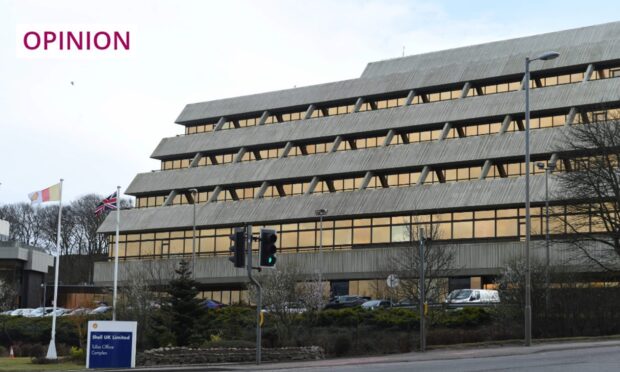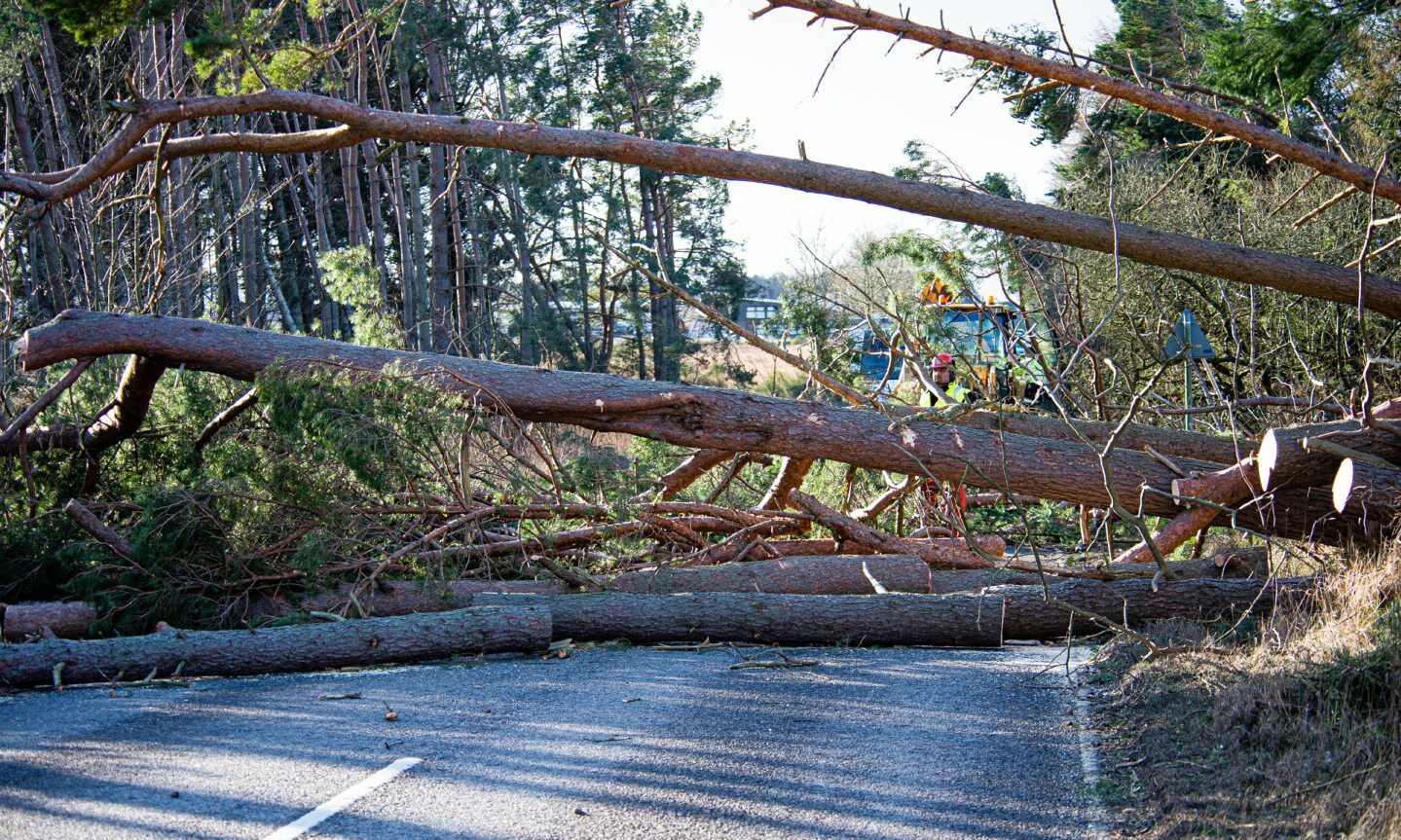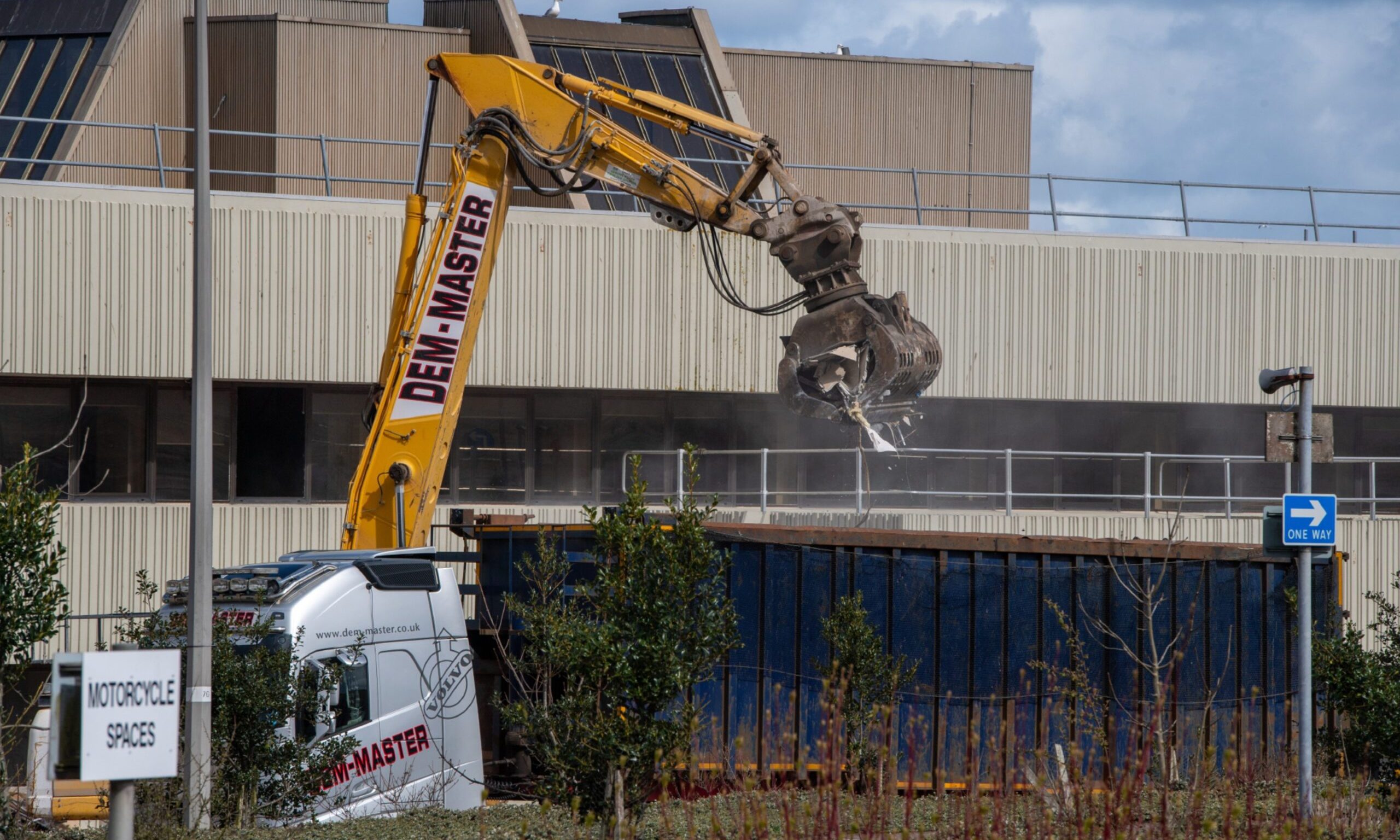Do you know Newmill Hill Forest?
As you cross the Culter Burn on North Deeside Road, over the bridge, passing Borsalino’s Italian restaurant, you change from city to Shire, and Newmill Hill is on your left. There’s a car park just a tad further along the road, formerly a popular spot for dog-walkers.
The trails have been closed since, I think, Storm Arwen – although, given the ferocity of named storms of late, it is hard to recall exactly which wind caused the issue. The remaining tangle of trees could be viewed rather magnificently, with a spectacular evening sunset peeping through, from my partner’s parents’ house in Peterculter, until those that remained from the storms were recently felled.
It’s strange how quickly you get used to a bare hill, or a bald spot. One day they were there, and the next they weren’t. Now, just a few weeks later, I take in the view without really thinking about them at all: adjusted to the new reality.
Closer to the sea, on the opposite bank of the Dee from Newmill, lies another once seemingly permanent fixture of Aberdeen, soon to be uprooted and torn from the ground – Shell’s former HQ on Tullos Hill. The gold windows glinting in sunrises and sunsets since 1979, the building will be razed, bit by bit, pane by pane, with the site earmarked for regeneration.
A funny thing, to pine over bricks and mortar, particularly a structure which must have looked so monstrous when it was first unveiled. Brutalist and domineering, yet familiar and a reminder of home, from a commanding position on Wellington Road. From a distance, it now has a cute and cosy glow, shrunken by the addition of the NESS incinerator just along the landscape.
I think of the eight much maligned and recently HES-listed tower blocks in Aberdeen. Like them, the Shell HQ is – unarguably, I think – a unique piece of architectural design in the city, with a wealth of local history around it.
There’s also its place in film history. Employees called it “The Temple of Doom” in reference to Indiana Jones, but here’s a little-known fact from your local purveyor of useless knowledge: it actually features in Michael Haneke’s 2017 film Happy End. The footage cuts to a BBC report about the energy industry, with an interview in front of Shell HQ, Aberdeen. Blink and you’ll miss it, but it’s there.
Redevelop and reimagine
There was a fair bit of discussion about what to do with the building once Shell had relocated employees to the Silver Fin, and petitions about the future of the site were launched and signed.
Worries exist about carbon emissions during demolition, which may need three million trees-worth of offsetting. Embodied carbon within buildings means that redevelopment, or reimagining, may be more environmentally sound than reducing them to rubble.
Arts organisations up and down the UK have made use of former commercial properties which are no longer occupied
What to do with such a building if no one else wants it, though? There are options. Arts organisations up and down the UK have made use of former commercial properties which are no longer occupied, where they are in good enough condition, including in Aberdeen and the Shire. Since it’s too late for the Tullos building, perhaps this could be considered for other soon-to-be-empty spots in Aberdeen.
Although it’s unlikely to return to the “Blue Woodies” from whence it came, the Shell site will become brownfield and hopefully be put to use, which is ultimately preferable to knocking down trees or ripping up parks elsewhere.
Symbolic – of what?
Last year, the council described its declaration of a climate emergency as “symbolic” – a phrase repeated back to them in the recent petition on the demolition. Declarations may be symbolic. Perhaps so are fallen trees, or demolished buildings, soon to be erased from the landscape.
Is the closure of the golden building on Tullos Hill symbolic of an energy industry which is stumbling toward its end, or simply of one that is changing, transforming and adapting as the world moves on? Or, is it a sign of a sector moving onwards, forever changing its relationship with the city, or even relocating?
Further down the Dee, trees were felled at Newmill, to be forgotten within weeks, even by those of us used to seeing them almost every day.
How long until Aberdeen forgets the Shell building, once all that remains is a space on Tullos Hill? And what might that mean for the city, and the industry, that has powered it for so long?
Colin Farquhar works as a creative spaces manager and film programmer in the north-east culture sector



Conversation